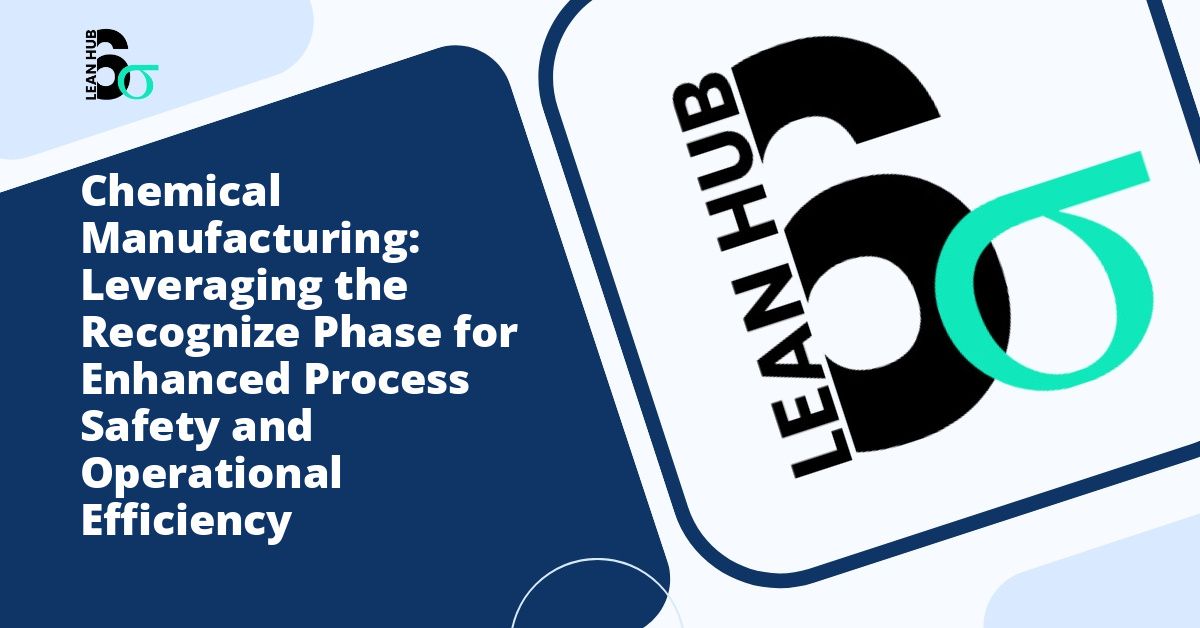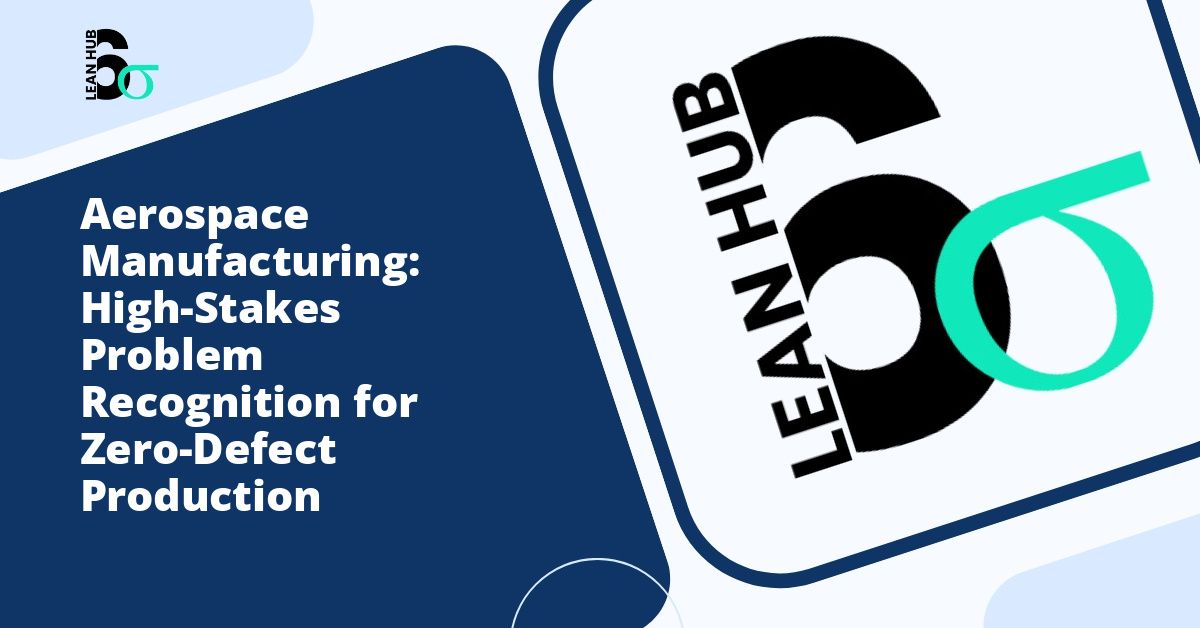In today’s competitive business environment, organizations continuously seek methodologies that enhance operational efficiency and deliver measurable results. The integration of Lean principles into the Six Sigma framework has emerged as a powerful approach to process improvement. While many practitioners focus on the traditional DMAIC phases, understanding how to effectively incorporate Lean thinking into the often-overlooked Recognize phase can set the foundation for transformational success.
Understanding the Recognize Phase in Six Sigma
The Recognize phase serves as the critical precursor to the formal DMAIC (Define, Measure, Analyze, Improve, Control) methodology. During this initial stage, organizations identify opportunities for improvement, assess the feasibility of potential projects, and align improvement initiatives with strategic business objectives. This phase acts as the gateway through which all subsequent improvement efforts must pass, making it essential to establish a solid foundation from the very beginning. You might also enjoy reading about How to Avoid Common Pitfalls in the Lean Six Sigma Recognize Phase.
Traditional Six Sigma approaches to the Recognize phase focus primarily on identifying variations and defects that impact quality. However, when we integrate Lean principles into this phase, we expand our perspective to include waste elimination, value stream optimization, and customer-centric thinking. This combination creates a more comprehensive framework for recognizing improvement opportunities that drive both quality enhancement and operational efficiency. You might also enjoy reading about Big Data and AI: Modern Approaches to the Recognize Phase in Lean Six Sigma.
The Core Principles of Lean Six Sigma
Before exploring the integration process, it is important to understand the fundamental principles that make lean six sigma such a powerful methodology. Six Sigma emphasizes statistical rigor, defect reduction, and variation control. It provides a structured, data-driven approach to problem-solving that minimizes errors and improves quality. You might also enjoy reading about Recognize Phase vs Traditional Problem-Solving: What's the Difference?.
Lean methodology, originating from the Toyota Production System, focuses on maximizing customer value while minimizing waste. The five core Lean principles include defining value from the customer’s perspective, mapping the value stream, creating flow, establishing pull systems, and pursuing perfection through continuous improvement.
When these methodologies converge during the recognize phase, organizations gain the ability to identify opportunities that simultaneously reduce waste and improve quality, creating synergistic benefits that neither approach could achieve alone.
Identifying Waste and Variation During the Recognize Phase
One of the most significant advantages of integrating Lean into the Six Sigma Recognize phase is the enhanced ability to identify different types of improvement opportunities. Traditional Six Sigma focuses on recognizing sources of variation and defects, while Lean adds the critical lens of waste identification.
The Eight Types of Waste
During the Recognize phase, teams should actively look for the eight types of waste that Lean methodology identifies:
- Defects: Products or services that fail to meet customer requirements
- Overproduction: Creating more output than immediately needed
- Waiting: Idle time when resources are not being productively utilized
- Non-utilized talent: Failing to leverage employee skills and knowledge effectively
- Transportation: Unnecessary movement of materials or information
- Inventory: Excess raw materials, work-in-process, or finished goods
- Motion: Unnecessary movement of people or equipment
- Extra processing: Work that adds no value from the customer’s perspective
By training recognition teams to identify these waste categories alongside traditional quality issues, organizations dramatically expand their pipeline of improvement opportunities. This comprehensive approach ensures that no potential source of inefficiency escapes notice during the critical early stages of project selection.
Value Stream Mapping in the Recognize Phase
Value stream mapping represents one of the most valuable Lean tools to incorporate into the recognize phase. This visual representation of material and information flow through a process provides immediate clarity regarding where value is created and where waste accumulates.
During the Recognize phase, conducting high-level value stream mapping exercises allows teams to visualize entire processes from end to end. This bird’s-eye view often reveals opportunities that would remain hidden when examining processes in isolation. The current state value stream map becomes an invaluable tool for identifying bottlenecks, redundancies, and non-value-adding activities that merit further investigation through formal Six Sigma projects.
Furthermore, value stream mapping inherently promotes cross-functional collaboration during recognition activities. When representatives from different departments collectively map processes, they develop shared understanding and often discover that problems affecting one area originate in another. This systems-thinking approach aligns perfectly with the holistic philosophy of lean six sigma.
Customer-Centric Recognition Strategies
Both Lean and Six Sigma place the customer at the center of improvement efforts, but Lean’s explicit focus on value as defined by the customer adds important dimension to the Recognize phase. Rather than simply identifying problems that exist within processes, integrated recognition strategies actively seek to understand customer expectations, requirements, and pain points.
Incorporating Voice of the Customer (VOC) activities into the Recognize phase ensures that improvement efforts address issues that genuinely matter to those who receive the products or services. Techniques such as customer interviews, surveys, focus groups, and complaint analysis provide rich sources of recognition opportunities that align improvement investments with customer priorities.
This customer-centric approach helps organizations avoid the common pitfall of pursuing improvement projects that achieve internal metrics without delivering meaningful value to customers. By filtering recognition activities through the lens of customer value, organizations ensure that their lean six sigma initiatives drive competitive advantage rather than merely achieving internal efficiency gains.
Practical Tools for Integrated Recognition
Successfully integrating Lean principles into the Six Sigma Recognize phase requires practical tools that teams can immediately apply. Several proven methodologies facilitate this integration:
Gemba Walks
The Lean practice of gemba walks, where leaders observe actual work processes in their natural environment, provides invaluable insights during the Recognize phase. These walks reveal the reality of how work actually occurs, often highlighting disconnects between documented procedures and actual practice. Observations from gemba walks frequently uncover improvement opportunities that would never appear in data reports or management presentations.
A3 Problem Solving
The A3 methodology provides a structured yet flexible framework for documenting recognition activities. Using a single-page format, teams can capture the current situation, identify gaps, propose countermeasures, and outline implementation plans. During the Recognize phase, abbreviated A3s help teams quickly evaluate potential opportunities and determine which merit advancement to full project status.
Pareto Analysis with Waste Categories
Traditional Pareto analysis identifies the vital few problems that account for the majority of defects or issues. By expanding this analysis to include Lean waste categories alongside quality defects, recognition teams develop a more comprehensive understanding of improvement priorities. This integrated approach ensures balanced project portfolios that address both quality and efficiency dimensions.
Building an Effective Recognition Framework
Organizations that successfully integrate Lean into the Six Sigma recognize phase establish formal frameworks that systematically capture, evaluate, and prioritize improvement opportunities. This framework should include clear criteria for opportunity assessment, standardized evaluation processes, and transparent decision-making mechanisms.
Key elements of an effective recognition framework include establishing baseline metrics that encompass both quality and efficiency dimensions, creating cross-functional recognition teams with diverse perspectives, implementing regular recognition reviews to maintain momentum, and developing clear escalation paths for opportunities that meet project criteria.
The recognition framework should also address resource considerations, ensuring that the organization maintains capacity to execute approved projects. Nothing undermines continuous improvement culture more quickly than generating numerous improvement ideas but lacking resources to act upon them.
Conclusion
Integrating Lean principles into the Six Sigma Recognize phase creates a powerful foundation for comprehensive process improvement. By combining Six Sigma’s focus on variation reduction with Lean’s emphasis on waste elimination and customer value, organizations develop enhanced capabilities to identify meaningful improvement opportunities.
This integrated approach to the recognize phase expands the aperture through which organizations view their processes, revealing opportunities that traditional methods might overlook. The result is a richer pipeline of lean six sigma projects that deliver measurable improvements in both quality and efficiency.
As organizations continue to face pressure to do more with less, the ability to systematically recognize and prioritize the right improvement opportunities becomes increasingly critical. Those that master the integration of Lean principles into their Six Sigma recognition processes position themselves to achieve sustainable competitive advantage through continuous, customer-focused improvement.








